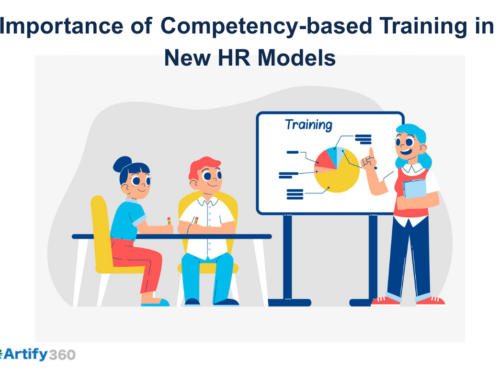In today’s business landscape in Saudi, organizations increasingly recognize the importance of HR systems in driving business performance. HR tools offer a range of features and functionalities that streamline HR processes, enhance employee experiences, and contribute to overall organizational success.
However, organizations must measure their HR software investments’ return on investment (ROI) to maximize their value. This blog explores the significance of HR software in driving business performance, the need to measure its ROI, and provides insights into calculating and presenting ROI data effectively.
Understanding the impact of HR software
HR software are solutions designed to automate and streamline HR processes, including recruitment, onboarding, employee management, payroll, performance management, and more. It aims to enhance efficiency, accuracy, and compliance while improving employee experiences.
HR systems offer a range of features, such as employee self-service portals, applicant tracking systems, performance dashboards, analytics, and compliance management tools. These functionalities enable organizations to centralize HR operations, improve data management, and drive strategic decision-making.
Measuring ROI in HR software investments
Measuring the ROI of HR software in Saudi involves quantifying the financial benefits and comparing them to the costs incurred. It provides organizations with a clear understanding of the value generated by the software and its impact on the bottom line.
Organizations should identify specific metrics and KPIs that align with their business goals to measure ROI effectively. These could include cost savings, time reduction, productivity improvements, compliance metrics, and employee satisfaction.
Organizations need to establish a baseline measurement to gauge the ROI accurately before implementing the HR system. By tracking progress over time, organizations can quantify the impact of the software and make data-driven decisions.
Tangible ROI of HR software
Cost savings through process automation and efficiency gains:
Saudi HR software automates manual processes, reducing the time and effort required for administrative tasks. This leads to cost savings, as resources can be reallocated to more strategic initiatives.
Reduction in administrative tasks and time savings:
Automating HR processes reduces the need for manual data entry, paperwork, and repetitive administrative tasks. This saves time, minimizes the risk of errors, and allows HR professionals to focus on more value-added activities.
Improved compliance and risk management:
HR software in Saudi often includes compliance management tools that ensure adherence to labor laws, industry regulations, and data privacy requirements. Organizations avoid penalties, legal issues, and reputational damage by mitigating compliance risks.
Intangible ROI of HR software:
Enhanced employee experience and satisfaction:
HR tools empower employees by providing self-service portals, allowing them to access information, update personal details, request leave, and engage in career development activities. This improves employee experience and satisfaction.
Increased employee engagement and productivity:
Saudi’s top HR software enables organizations to streamline performance management processes, set clear goals, provide continuous feedback, and recognize employee achievements. This fosters a culture of engagement, driving productivity and organizational success.
Improved talent acquisition and retention:
Efficient HR systems enhance the recruitment and onboarding processes, attracting top talent and ensuring a smooth transition for new hires. It also enables organizations to develop personalized career paths and provide ongoing training, promoting talent retention.
Factors affecting ROI in HR software investments:
Organizations must address challenges associated with implementing HR software in Saudi, such as resistance to change, user training, and system integration. Overcoming these challenges ensures smooth adoption and maximizes the potential ROI.
HR stools should be customizable to align with the organization’s unique processes and requirements. Scalability is also important, as the software should accommodate future growth and evolving needs without requiring significant additional investments.
Seamless integration between HR systems (e.g., payroll, learning management) is crucial for data consistency and process efficiency. Compatibility and integration capabilities should be evaluated when selecting an HR solution.
Continuous improvement and maximizing ROI:
Ongoing evaluation and optimization of HR software usage:
To maximize ROI, organizations should continuously evaluate HR software usage, gather user feedback, and identify improvement areas. Regular updates, training, and optimization ensure the software meets evolving needs.
Leveraging data and analytics for insights and decision-making:
HR solutions provide access to vast amounts of data and analytics that organizations can leverage to gain insights into HR processes and make informed decisions. Utilizing these insights enhances efficiency and contributes to improved business performance.
Staying updated with new features and emerging trends:
To remain competitive, organizations should stay updated with new features and emerging trends in Saudi HR software. Regularly assessing the software market ensures that the organization leverages the latest advancements and maximizes its ROI.
Final thoughts
Measuring the ROI of HR software investments is essential for organizations seeking to drive business performance. Organizations can demonstrate the tangible and intangible benefits of their investments by understanding the potential impact of HR software, identifying measurable metrics, and calculating ROI accurately.
Effective presentation of ROI data, consideration of implementation challenges, and a focus on continuous improvement are vital to maximizing the ROI and achieving long-term success. By investing in Artify360 HR software and measuring its ROI, organizations can unlock the full potential of their HR processes, enhance employee experiences, and drive overall business success.






